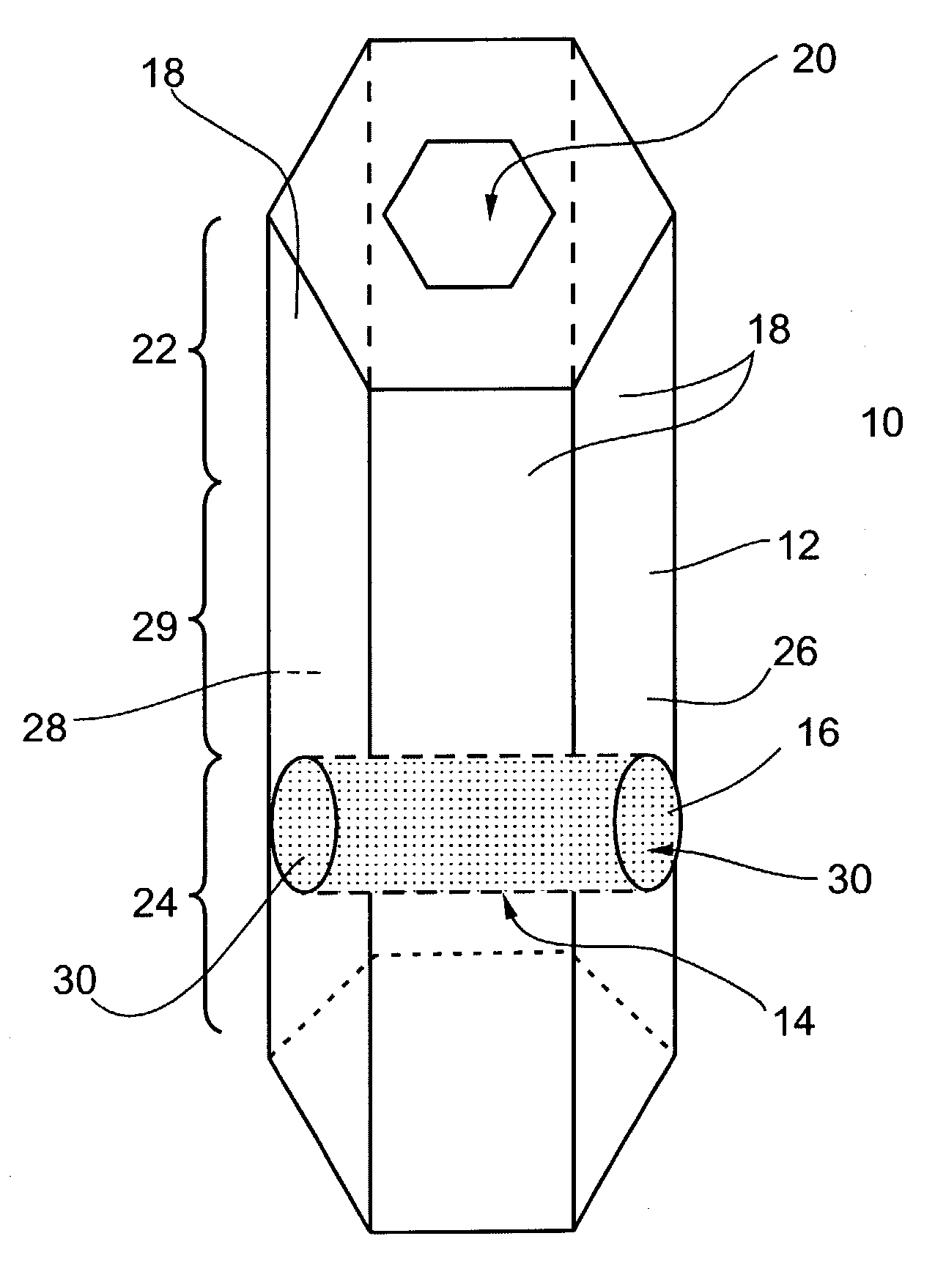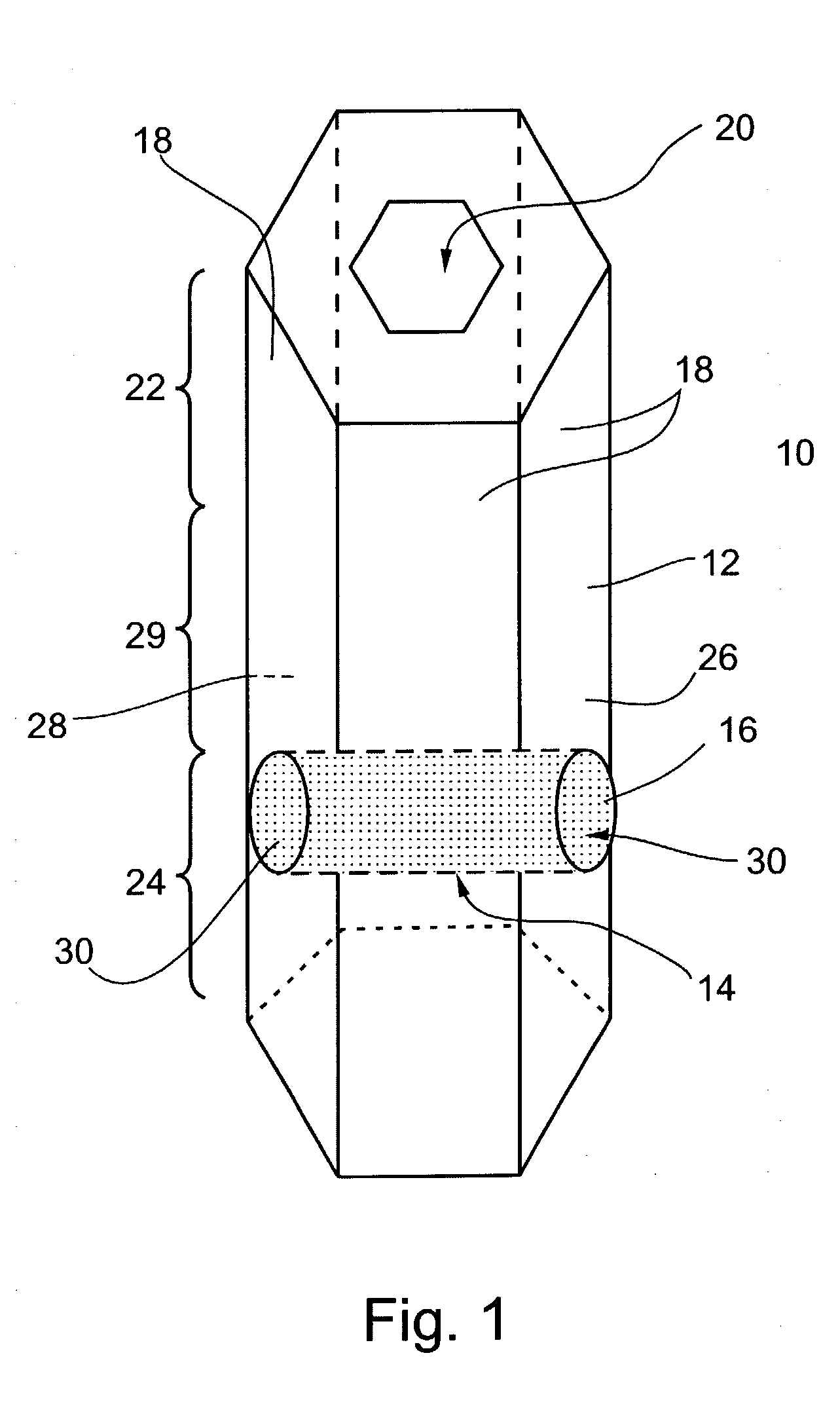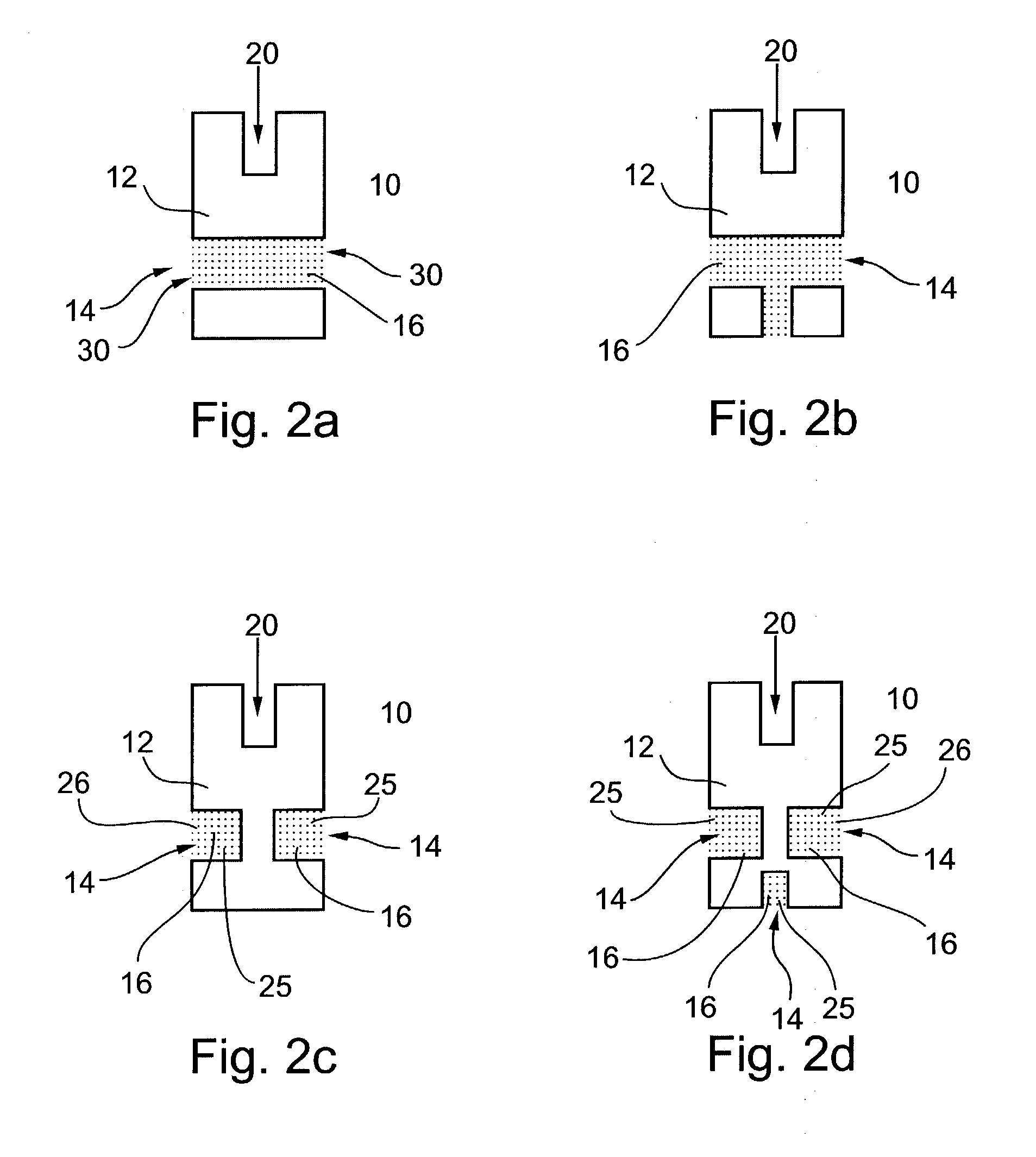Hydrogel incorporated with bone growth promoting agents for dental and oral surgery
a technology of bone growth and promoting agent, applied in the field of dental and oral surgery, can solve the problems of rapid adsorption of local plasma proteins onto the implant surface, the inability to achieve the effect of adequate length of endosteous implants, and the difficulty of replacing missing teeth with implants in the posterior maxilla
- Summary
- Abstract
- Description
- Claims
- Application Information
AI Technical Summary
Problems solved by technology
Method used
Image
Examples
Embodiment Construction
[0131] Reference is now made to the following examples, which together with the above descriptions, illustrate the invention in a non limiting fashion.
[0132] Materials and Experimental Methods
[0133] Hydrogel preparation: Hydrogel (95% wt) was prepared by chemically cross-linking a 10% aqueous acidic gelatin (Nitta Gelatin Co. Osaka, Japan) solution with 5.0 mM glutaraldehyde at 4.degree. C. The acidic gelatin, which was isolated from bovine bone using an alkaline process, is a 99 kDa molecule with an isoelectric point of 5.0; the gelatin was designated acidic because of its electrostatic ability. The mixed acidic gelatin and glutaraldehyde hydrogel was cast into plastic molds (3.times.3.times.3 mm). The cross-linking reaction was allowed to proceed for 24 h at 4.degree. C. following which the cross-linked hydrogel was immersed in 50 mM glycine aqueous solution at 37.degree. C. for 1 h to block residual aldehyde groups of glutaraldehyde. The resulting hydrogel was punched out and rin...
PUM
| Property | Measurement | Unit |
|---|---|---|
| response time | aaaaa | aaaaa |
| response time | aaaaa | aaaaa |
| pH | aaaaa | aaaaa |
Abstract
Description
Claims
Application Information
 Login to View More
Login to View More - R&D
- Intellectual Property
- Life Sciences
- Materials
- Tech Scout
- Unparalleled Data Quality
- Higher Quality Content
- 60% Fewer Hallucinations
Browse by: Latest US Patents, China's latest patents, Technical Efficacy Thesaurus, Application Domain, Technology Topic, Popular Technical Reports.
© 2025 PatSnap. All rights reserved.Legal|Privacy policy|Modern Slavery Act Transparency Statement|Sitemap|About US| Contact US: help@patsnap.com



